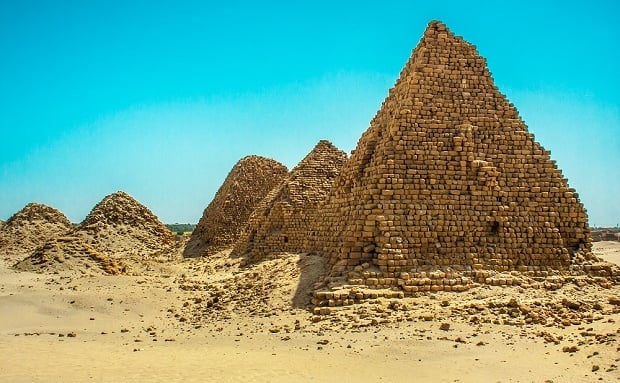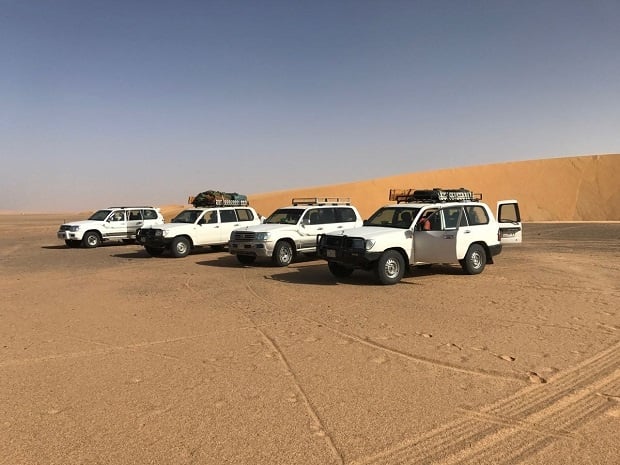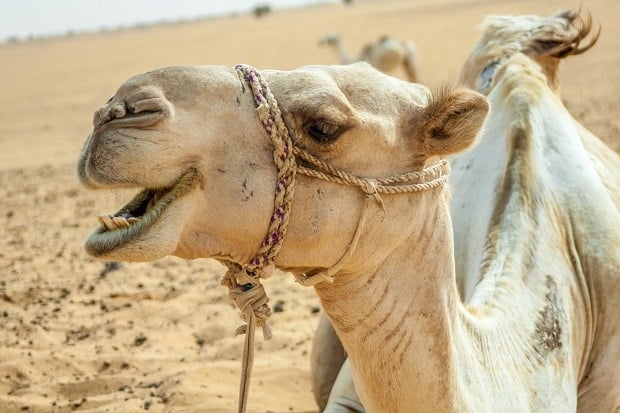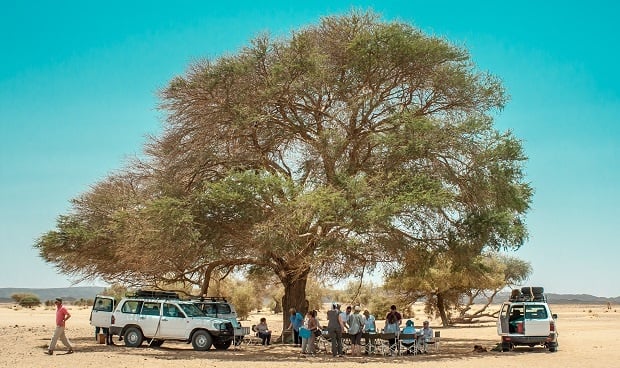Sudan - The land of the black pharaohs

When Sudan received its independence on 01 January 1956, it was the biggest country in Africa. This changed in 2011 when South Sudan gained independence/secession from Sudan. Today, Sudan is the third biggest country in Africa, roughly half the size of Australia. The separation from South changed the security-issues of the country in totality, resulting in a safe destination that is worth exploring.
Statistical Facts
- Khartoum is the Capital of Sudan
- There are more pyramids in Sudan than in Egypt
- Population is roughly 34 million with growth of approximately 2.5%
- Sudan’s development dates back as far as 3300BC through the Pharaoh’s and Kingships
Live the Journey’s Johan van Tonder recently spent some time in Sudan and shares some of his experiences here:
Travelling Sudan
Arriving in Khartoum exposed us once again to the “organised chaos” of so many airports. After 90 minutes we collected our bags and hopped into an air-conditioned transfer vehicle to make our way to the hotel in Khartoum.
A strong “English Colonial” influence is seen in the architecture of many buildings in Khartoum. The history of the British Colonial Period (1896 – 1955) or better known as the Anglo-Egyptian Period, is riddled with well-known names of that era, including Charles Gordon, Lord Kitchener, Sir Geoffrey Archer, Sir Robert George Howe and many more.
Khartoum is divided into three areas: Khartoum - Public Service/ Administrative Section, North Khartoum – Industrial section of the city, where most of the people work and Omdurman - Where all the markets and shops are situated. (One of the biggest camel markets are located here and thousands of camels change hands here on Fridays and Saturdays.)
Interestingly, Omdurman used to be the Capital, but the colonial era saw Khartoum becoming the Capital of Sudan. The outlay of Khartoum is also in the shape of the British Flag!
At Khartoum we also see the confluence of the Blue Nile, which originates in Ethiopia (70% of the Nile’s water comes from here) and the White Nile, which originates in Uganda, to form the Nile River. Here at the Mudarani Peninsula is where the mighty Nile starts it journey north, through Egypt, and into the Nile Delta, which finally ends in the Mediterranean Sea. Viewing the confluence by boat and seeing the different colours of the two Nile Rivers, was an extraordinary experience.
Up to 2003, the northern sections of Sudan was not readily accessible, as ferries had to be used to cross the mighty Nile. Since then, several bridges were built and the desert is more accessible and travelling time is significantly less.
From the border of Egypt to Khartoum, there are six cataracts or massive rapids in the Nile, which made the river impassable for earlier Egyptian explorers. The second cataract is the biggest and spans roughly 50km of the Nile. Here the Egyptians built a road around the cataract, transported their boats by road and continue their journey south!
Nowadays, most of these cataracts are covered by either man-made dams or weirs, but remnants are still to be seen, especially at the third cataract.
During the building phases of these dams/weirs, all the artefacts of the area, which include tombs, sarcophagus, paintings, massive sculptures, etc. were carefully removed and transported to Khartoum’s National Museum. This museum is seen as the best in Sudan and has breath-taking exhibits. The ground floor covers the rise and fall of the kingdoms of Kerma, Kush and Meroe. There are some stunning royal statues and perfectly preserved 3500-year-old artefacts from Kerma. Upstairs are numerous medieval Christian frescos removed from the ruined churches of Old Dongola and elsewhere. Outside are some temples rescued, Abu Simbel–style, from the rising waters of Lake Nasser. You need at least two hours for a visit.
Khalifa House also offers a good overview of the colonial history. Opposite the road is a Catholic Church, worth a quick visit.
Travelling North, we visited the Western, Bhayuda (White) and Nubian Deserts (Nub means gold).
Places of interest visited
- Karima (historic name is Napata) for old temples and Jebel Barkal, a holy mountain, with its 100m high pinnacle, in line with the pyramids of Nuri. The tomb of Tanutamani, a Black Pharaoh, at El Kuru. This area is a UNESCO World Heritage Site.
- Necropolis of Nuri – excellent photography opportunities late afternoon. Here you will find 22 King Pyramids and 59 Standard Pyramids. This is also where we saw the highest pyramid in Sudan.
- Bayuda Desert: A visit to the Nomadic Tribes was very rewarding – enjoy a unique drink of coffee and ginger, an interesting taste combination, which is surprisingly quick to get used to and even miss!
- Kerma Museum with its magnificent Granite Statues and Nubian artefacts
- Oldongola Tomb Site as well as the Oldongola Archaeological site. The Cemetery is packed with beautiful tombs for "saints" and ordinary graves with no writings on it.
- Tobos where we saw the sleeping pharaoh. This is a half-completed granite statue, three meters in size! Inscriptions on rock-faces where the pharaoh indicated his conquered land.
- Necropolis of Meroë, probably the most photographed pyramids of Sudan. Two groups of pyramids, north and south but southern necropolis much older than northern necropolis. We also visited the mountain where the blocks were mined for the pyramids.
- The Royal City is very close to Meroë. This used to be a thriving city of more than 10,000 inhabitants. A large indoor pool from that period and a sauna is still visible.
- Naga Archaeological Site. The well-known Temple of Amun, as well as the Temple of Apedemak was built here. Remnants of a “Roman Kiosk” is also visible, a lion enclosure as well as an area where elephants were kept.
Traveling to Sudan was probably one of the most exciting and spiritual trips for me, in a very long time. The people are fantastic – openhearted, friendly and extremely helpful.
The history of the Egyptians, moving south into Sudan and how they “occupied” the land along the Nile is absolutely amazing. Conquering cataracts, 50km’s long and building more pyramids in Sudan than there are in Egypt, is mind-boggling.
The perception that Sudan is a risky destination, is a pity and not true. This is however something that Sudan Tourism needs to work on if they wish to have more than the current 1,200 tourists visiting this incredible country per year.
Believe me, it is a safe, extraordinary, unexplored, sort-of-eccentric destination and ready for visitors!
I will be back, without a doubt…









Comments